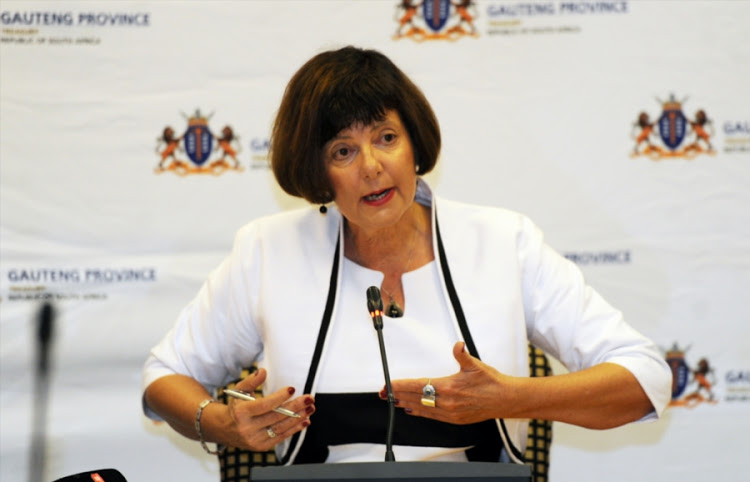- The Department of Forestry, Fisheries and Environment (DFFE) recently responded Eskom’s applications for the postponement of the implementation of some of the air quality compliance timelines set in air quality legislation for its power stations.
- Eskom received positive postponement decisions for Grootvlei, Arnot, Hendrina, Camden, Komati, Acacia and Port Rex.
- Eskom’s request for postponements at Matla, Duvha, Matimba, Medupi and Lethabo were declined completely.
- Postponement applications for Majuba, Tutuka, Kendal, and Kriel were partially granted.
- Eskom said that it has reviewed the decisions and believes they will have a very significant impact on Eskom’s ability to provide electricity.

Barbara Creecy, South Africa’s Minister of Environment, Forestry and Fisheries. Image credit: Jabu Kumalo
The Minimum Emission Standards (MES) regulations provide time frames for compliance to power plant air quality emission limits and arrangements in respect thereof, among other things: a once-off postponement with the compliance of minimum emissions for “new” plant for five years from the date of issue, and no once-off postponement would be valid beyond 31 March 2025; a once-off suspension for plants being decommissioned by 31 March 2030; and that the National Air Quality Officer may grant an alternate emission limit or emission load if certain conditions are met.
Related news: Eskom is the worlds worst polluting power company
During 2019 and 2020, Eskom submitted applications for postponement, suspension and/or alternative limits of the MES for 16 of its power stations (Majuba, Kendal, Lethabo, Tutuka, Duvha, Matla, Kriel, Arnot, Hendrina, Camden, Komati, Grootvlei, Matimba, Medupi, Acacia and Port Rex). The applications were submitted after an extensive public participation process. The applications contained detailed reasons for the requests, which included the following aspects:
- Eskom’s planned emission reduction plan includes investing in technology retrofits to reduce emissions, the progressive closure of older stations, and the move to a cleaner energy mix. These initiatives will result in a substantial reduction of emissions going forward. Particulate Matter (PM), Nitrogen oxides (NOx) and Sulphur Dioxide (SO2) will reduce by 58%, 46% and 66%, respectively, by 2035. Carbon Dioxide emissions will also decrease by 50% by 2035. These plans are in line with Eskom’s Just Energy Transition (JET) strategy and government’s policy objectives in terms of greenhouse gas reduction.
- The cost of full compliance to the MES is estimated at over R300 billion; and will not add any additional capacity to the national grid. If funding were available, and if it were possible to execute all the compliance projects in time to meet the requirements, these projects would add at least 10% to the existing electricity tariff.
- There are very significant additional water requirements associated with installing emission reduction technology for SO2, which would increase Eskom’s present water demand by some 20%. This increase in water demand is not considered appropriate in a water-stressed country such as South Africa.
- There are significant practicality challenges to implementing the required upgrades within the legal timeframes without causing national electricity capacity issues.
- The ambient (as opposed to point source) air quality in the affected regions must be improved to limit the impact of air quality on the health of communities, but except for PM, the SO2 and NOx ambient air quality standards are generally complied with. Decisions on the MES application should therefore preferably consider the full range of sustainable development issues rather than focus on stack/point source emissions.
The DFFE decision on the applications was made on 30 October 2021 and made available to Eskom on 4 November 2021. Eskom received positive postponement decisions for Grootvlei, Arnot, Hendrina, Camden, Komati, Acacia and Port Rex. The coal fired power stations are scheduled to shut down by 2030 with Komati being the first to shut down its last unit in September 2022 and Hendrina before 2025. The two peaking stations, Acacia and Port Rex reach their 50 year life in 2026/7.
Eskom’s request for postponements at Matla, Duvha, Matimba, Medupi and Lethabo were declined completely. Postponement applications for Majuba, Tutuka, Kendal, and Kriel were partially granted.
Eskom said that it has reviewed the decisions and believes they will have a very significant impact on Eskom’s ability to provide electricity. If implemented, the decision will result in an immediate shutting down of 16 000MW of installed coal fired capacity. This would have a significant negative impact on the economy and employment, particularly in Mpumalanga and Lephalale, and delay the country’s plans for a just energy transition toward a cleaner electricity supply.
As such, Eskom is engaging with the DFFE, the Department of Public Enterprises, the Department of Minerals and Energy and others in respect of the way forward.
Author: Bryan Groenendaal
Source: Eskom














